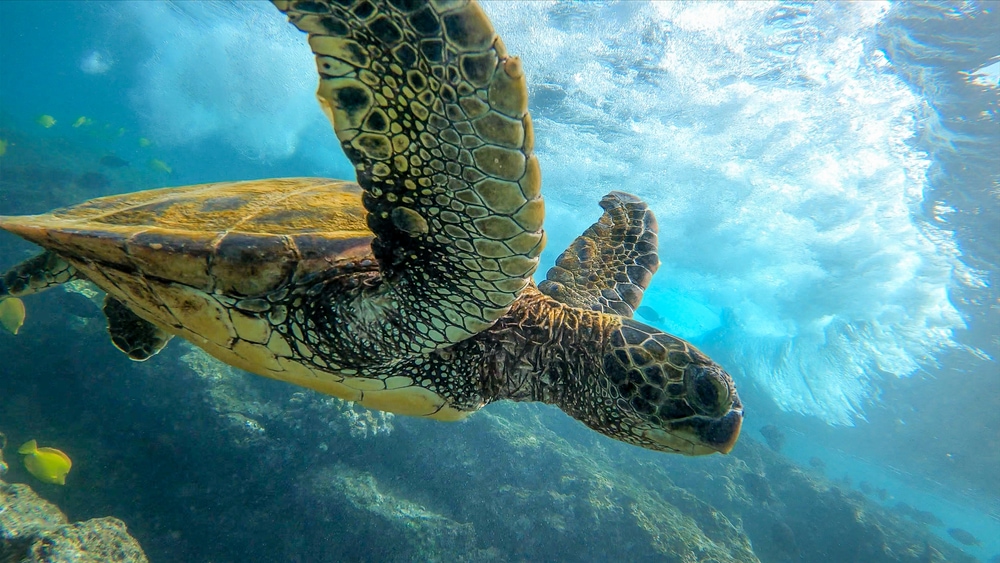
Researchers really aren’t sure how long sea turtles can live because they’re exceptionally hard to track. What we do know is that they live exceptionally long lives. Most are believed to live about 30-50 years, but some are thought to live 90+ years.
Sea turtles are one of the most beloved animals on the planet. People love to come see them swimming in the ocean and in the aquarium. Most people find it distressing that sea turtles are endangered because sea turtles are just so endearing.
Although there is much to love about sea turtles, we don’t know much about their lifespans. Sea turtles are notoriously hard to track and research because they migrate for thousands of miles, and they live exceptionally long lives.
Recent research suggests that some sea turtles may be able to live up to 90-100 years of age. Still, other researchers believe that they can live to well over 100 years of age.
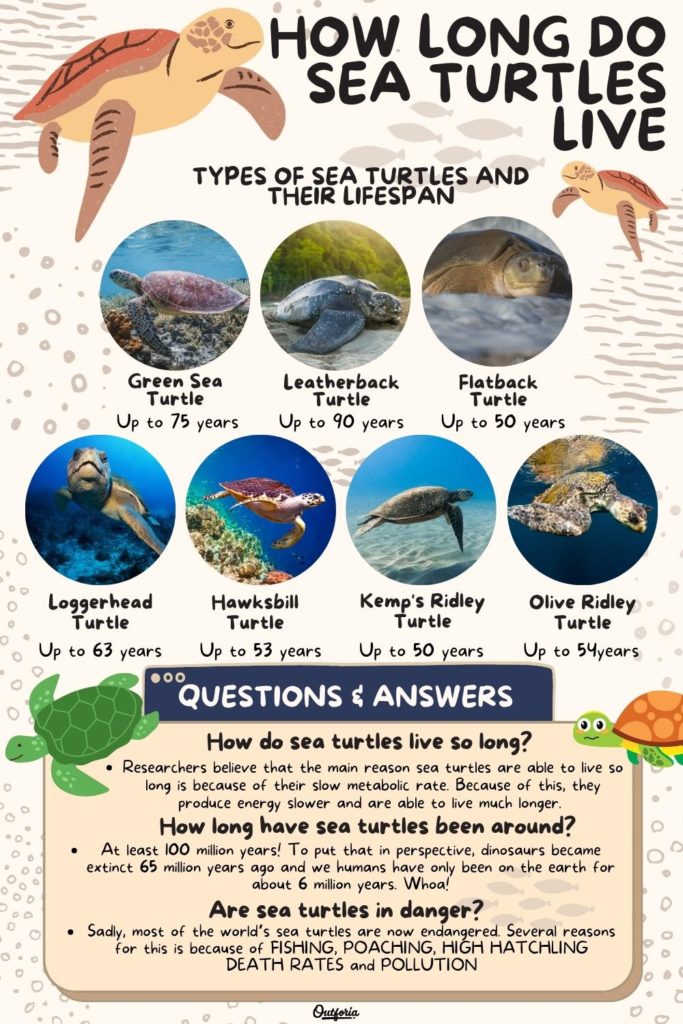
Share this image on your site
<a href="https://outforia.com/how-long-do-sea-turtles-live/"><img style="width:100%;" src="https://outforia.com/wp-content/uploads/2022/06/how-long-do-sea-turtles-live-infographic-683x1024.jpg"></a><br>how long do sea turtles live <a href="https://outforia.com">Outforia</a>What Are Sea Turtles?
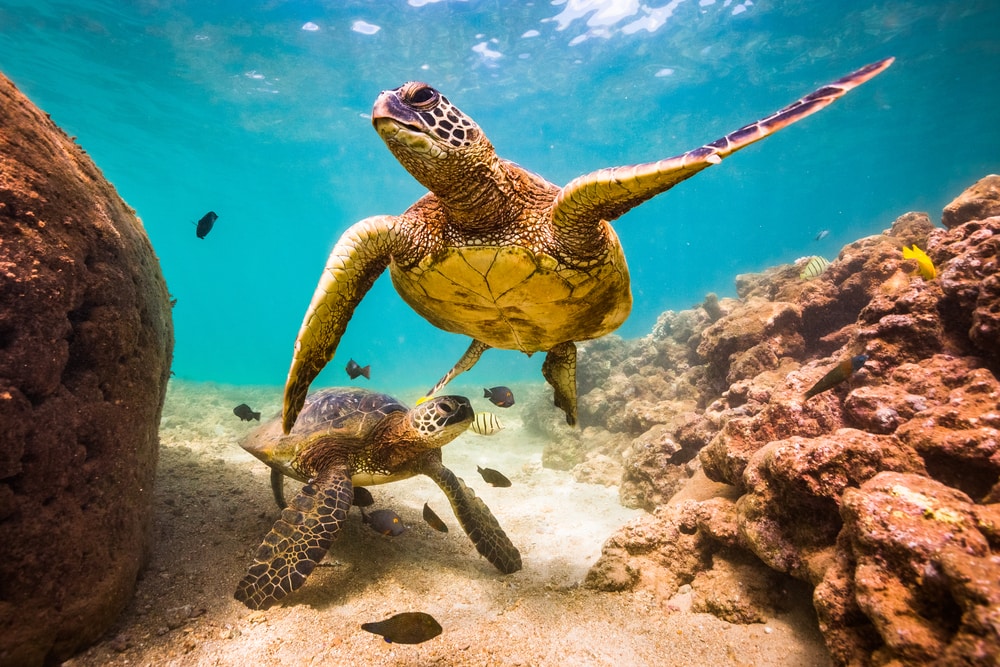
Sea turtles are a type of marine reptile that can be found just about everywhere in the world’s oceans. They prefer to live in waters that are tropical or subtropical, but they can be found everywhere except for the polar seas.
They look very similar to other turtles, but their bodies are flatter and more streamlined for more efficient swimming. They also have wide, flat flippers that help them to easily glide through the water. The large front flippers work like paddles to help the turtle swim quicker through the water. The smaller back flippers are used to help the turtle steer.
Unlike turtles who are more adapted for land, sea turtles can not retract their head or feet into their shell. Like their streamlined bodies, their inability to hide inside their shell helps them swim through the water quicker and easier.
Even though they are good swimmers and can maneuver easily, they cannot swim all that fast. Generally, they will swim at speeds of about 0.9-5.8 mph (1.4-9.3 km/h), but they can speed up to 22 mph (35 km/h) if needed.
Although sea turtles live the majority of their life in water, they do need to breathe air. They are exceptionally good at holding their breath for a long period of time to swim and hunt, about 4-7 hours. They are also able to lower their heart rate as a way to conserve energy.
Why Are Sea Turtles Important?
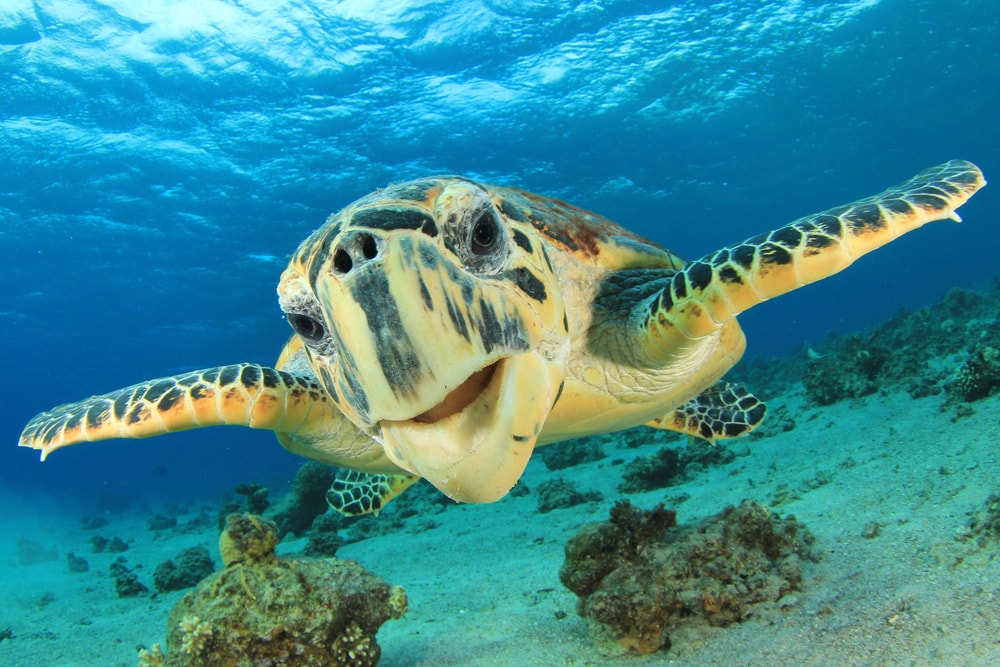
Sea turtles are a very important animal in our ecosystem, and we know this because they’ve been around for about 110 million years. They play a large role in the ecosystems of our oceans and, in turn, the entire world.
Why is this? Sea turtles are a keystone species meaning that they have a large influence over the environment and the other animals around them. If sea turtles were to go extinct, it would completely disrupt the ecosystem around them.
They Control Animal & Vegetation Populations
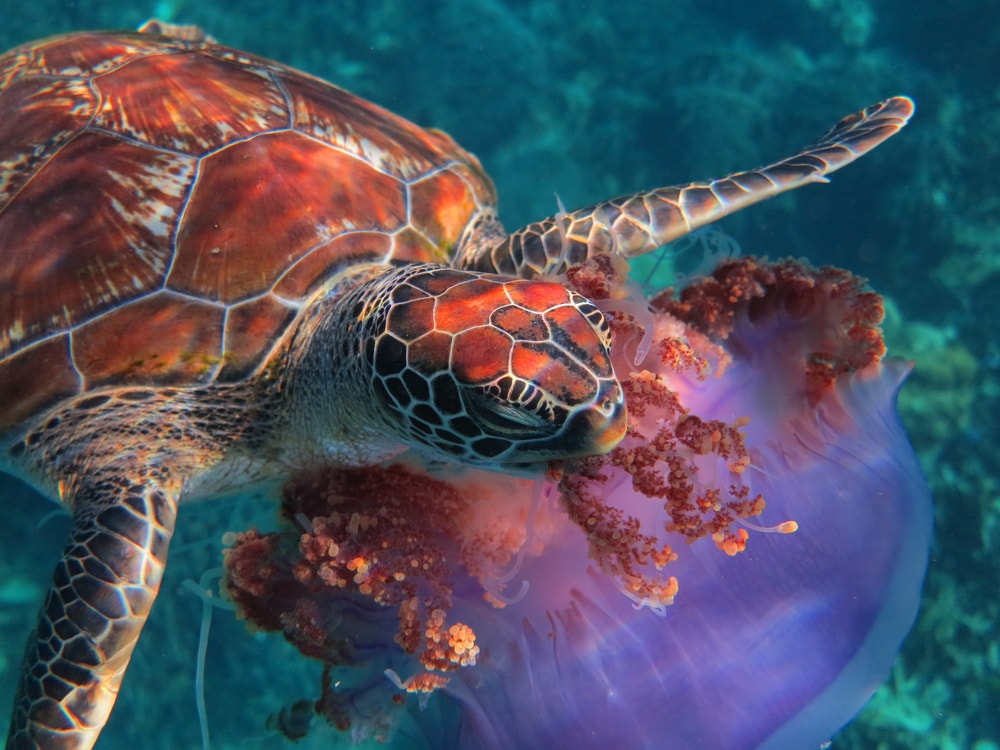
Firstly, they control the populations in coral reefs and seagrass beds. For example, leatherbacks are notorious for feasting on jellyfish, effectively regulating their populations throughout the ocean.
Without leatherbacks and other jellyfish-eating sea turtles, the jellyfish populations would quickly get out of control. The problem is that jellyfish feed on larval fish. Many fish populations are already threatened because of overfishing, so it would be devastating to lose even more fish because they’ve become prey to an excessive amount of jellyfish.
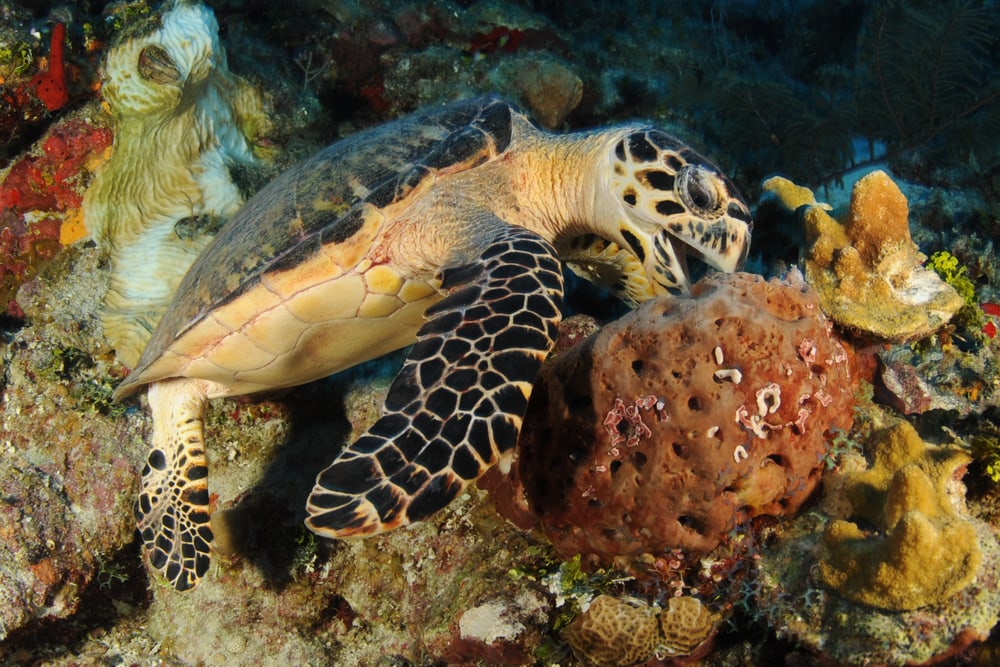
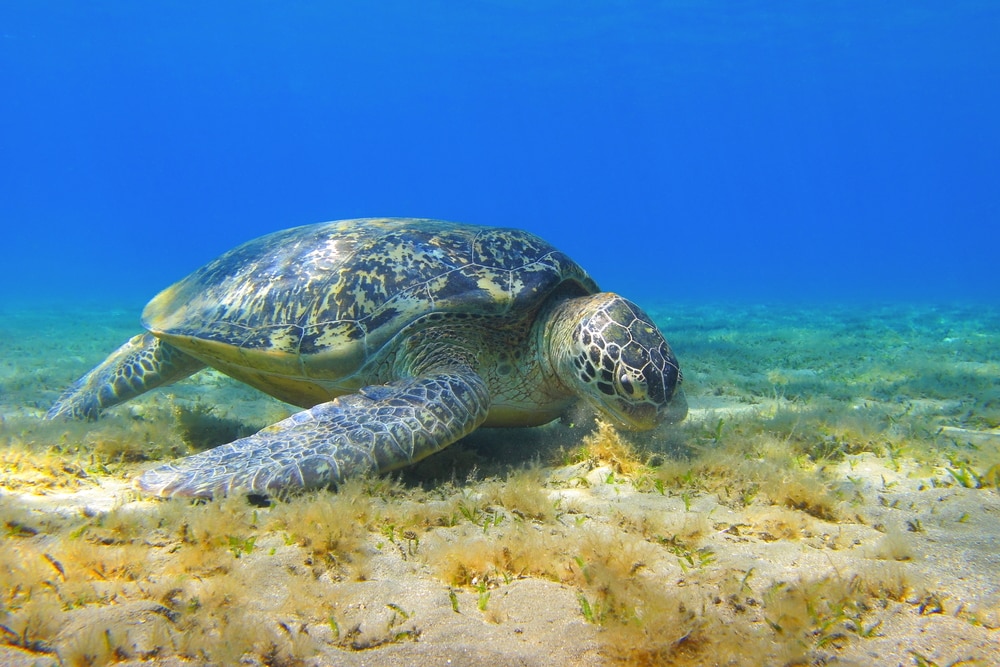
Similarly, green turtles feast on seagrass. Seagrass needs to be regularly fed on so that it stays healthy. By eating the sea grass, new seagrass is able to grow back stronger and healthier. Healthy seagrass provides food and shelter for other species. It is also a great resource for storing carbon.
In the coral reefs, the marine sponges are kept under control by the hawksbills turtles. They love marine sponges, and eating these sponges allows for other sponges to grow. When there is a better diversity of sponges, it creates more diversity throughout the whole reef itself.
Not only that, but if sponges begin to grow too much, they can take over the reef, suffocating and killing corals.
They Provide Nourishment To The Ecosystem
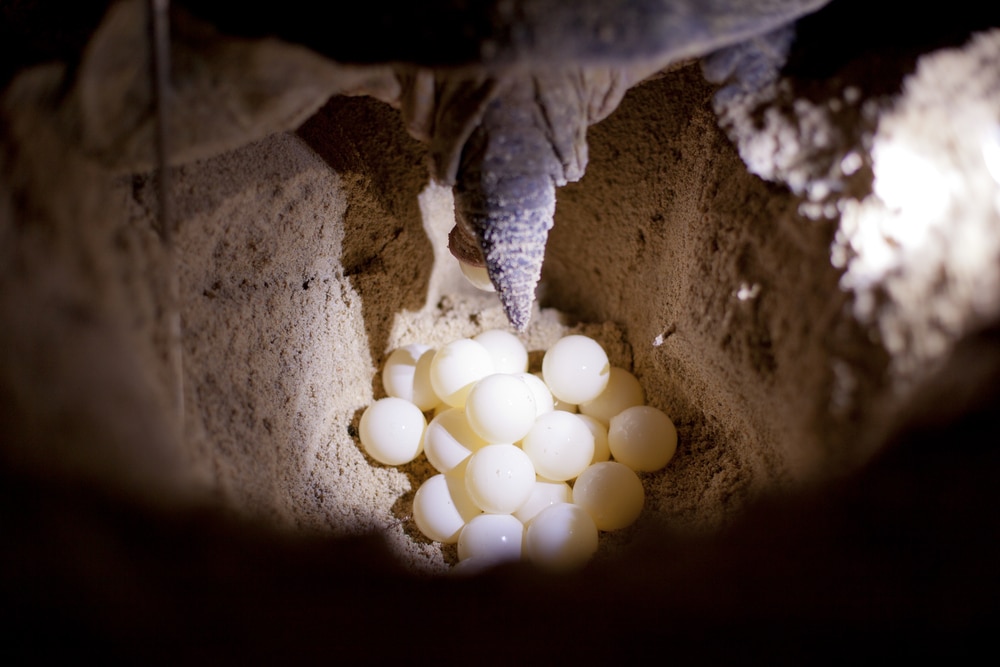
The nests that sea turtles leave behind on the beaches also act to help the ecosystem of the beach. When the baby sea turtles hatch, they leave behind their eggs.
Many egg-growing species will eat their egg shell after birth because it’s so rich in nutrients. Because of predators, it’s not safe for sea turtles to do this. So, they leave the eggs and their nutrients behind to be consumed by the environment. The nutrients in the eggs allows the vegetation to grow and thrive, and it prevents coastal erosion.
Similarly, although it is sad, dead embryos that never hatch from their eggs will also provide the beach with important nutrients.
They Are An Important Prey Source
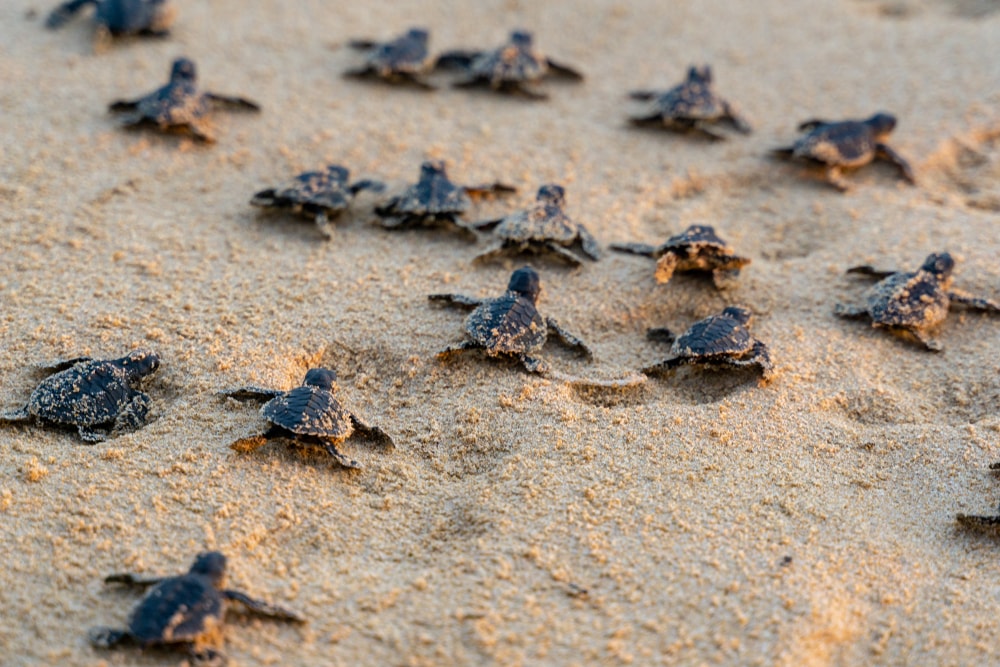
Another sad fact is that the eggs and the hatchlings are an important food source to other animals on the coast and in the ocean.
Sea turtle mothers lay many eggs, sometimes more than 100 eggs in a single batch. They have evolved overtime to have these many eggs because many of them won’t survive past infancy. Fish, birds, raccoons, and other mammals all rely on sea turtle eggs and hatchlings as an important part of their diet.
Besides the eggs and hatchlings, adult sea turtles are also an important prey source. Animals like sharks and orcas make sea turtles a regular part of their diet, and they would suffer if sea turtles suddenly died out.
They Provide Housing For Other Creatures
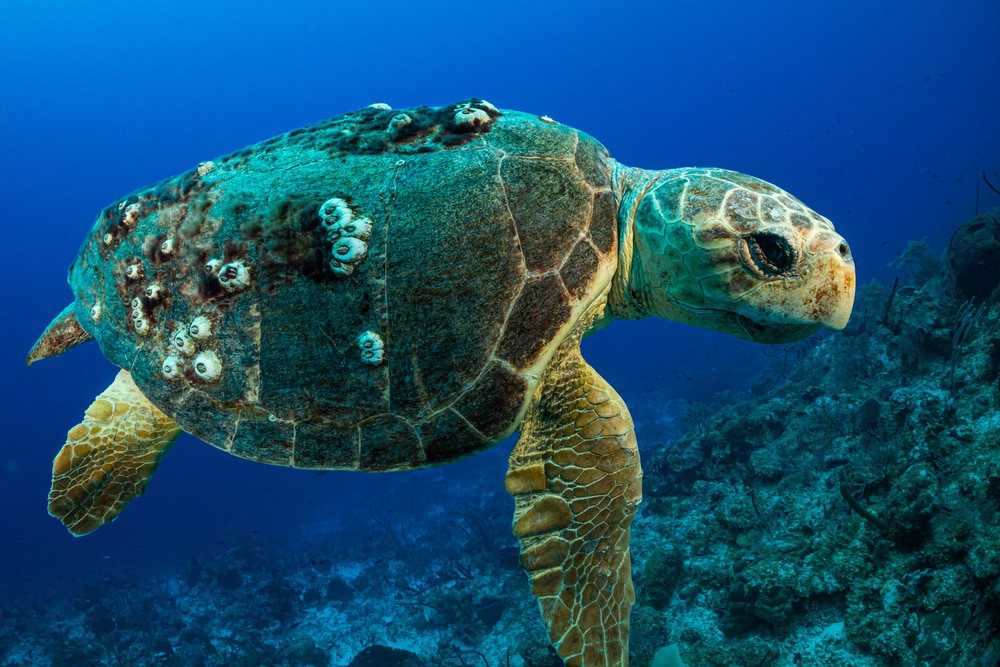
Sea turtles will even offer up their bodies to help the ecosystem while they’re still alive. For example, many barnacles and other crustaceans will latch onto a sea turtle’s shell and call it home. Sea turtles can travel thousands of miles every year, so they are easily able to bring these critters with them. The little crustaceans are inadvertently transplanted all over the world.
Believe it or not, but fish will even use sea turtles as a kind of shelter against predators. Sea turtles are quite large compared to most fish, so the fish will hide underneath the turtle, hoping that the predator will not be able to see them.
Because sea turtles must come up for air, they are also able to help out the seabirds! While resting, sea turtles will often choose to float at the surface of the water. Sometimes, tired seabirds will simply glide down and take a rest on the back of the turtle.
They Create Revenue Through Tourism
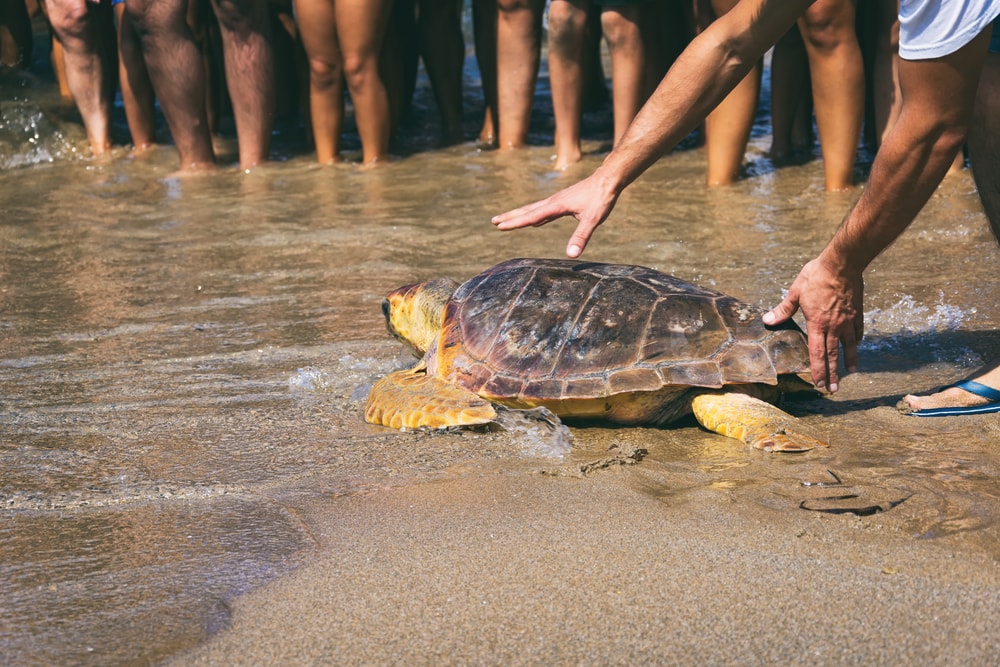
They also create a lot of money for countries that rely on tourism. People are drawn to the majesty of sea turtles, so they will come to visit them from all over the world.
Some of the most popular activities involving sea turtles include turtle watching or scuba diving. These activities allow people to see the turtles while helping the community. Even better, unlike activities like swimming with dolphins, these activities do not harm the sea turtles.
Sea turtles don’t just help humans to bring in money, however. They have been a huge part of our culture for thousands of years. In some cultures, the indigenous people thought of sea turtles as their ancestors.
People all across the world simply love sea turtles and wish to see them thrive for years to come.
You may also like: Learn the Differences and Similarities Between Turtles vs Tortoise: Complete with Images, Facts, Chart, and More!
Are Sea Turtles In Danger?
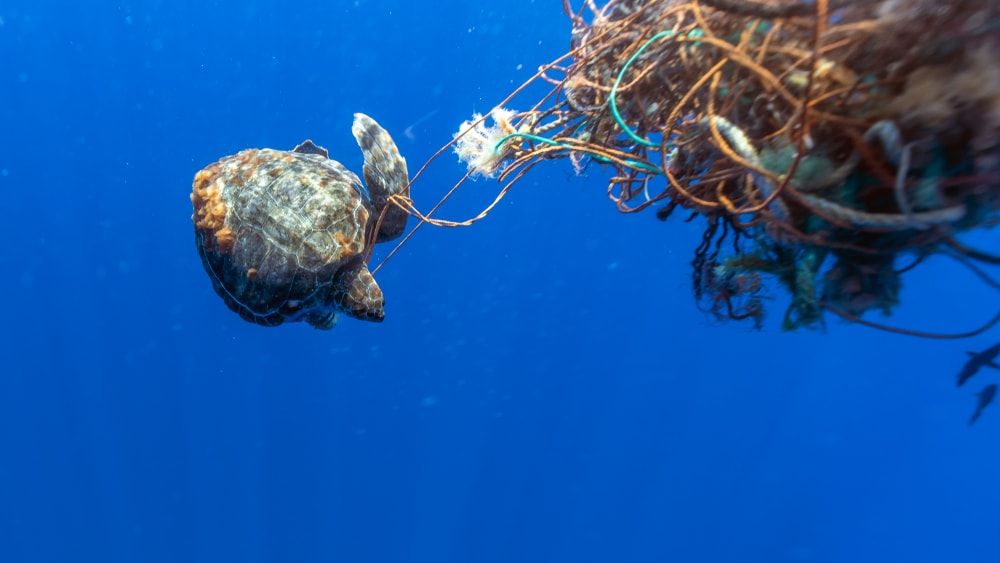
Unfortunately, most of the world’s sea turtles are now endangered. There are several different reasons for this.
Fishing & Poaching
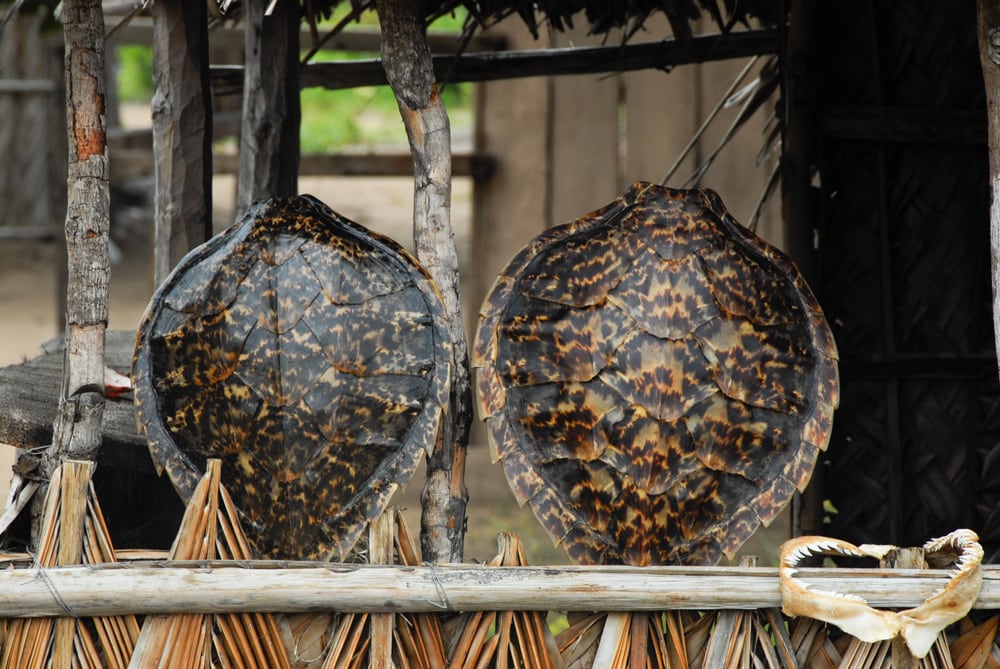
They have become the common victims of fishing bycatch — the act of a turtle being caught in a net intended for fish. Usually, the fishermen will try to free the turtles from the nets and release them back to the ocean, but too often, it is too late.
In countries where it is not yet illegal, sea turtles may be caught for food. Like many other ocean species, sea turtles are simply becoming overfished. They have lower birth rates and high infant mortality, so they are not able to replenish their populations enough to keep up with their death rates.
High Hatchling Death Rates
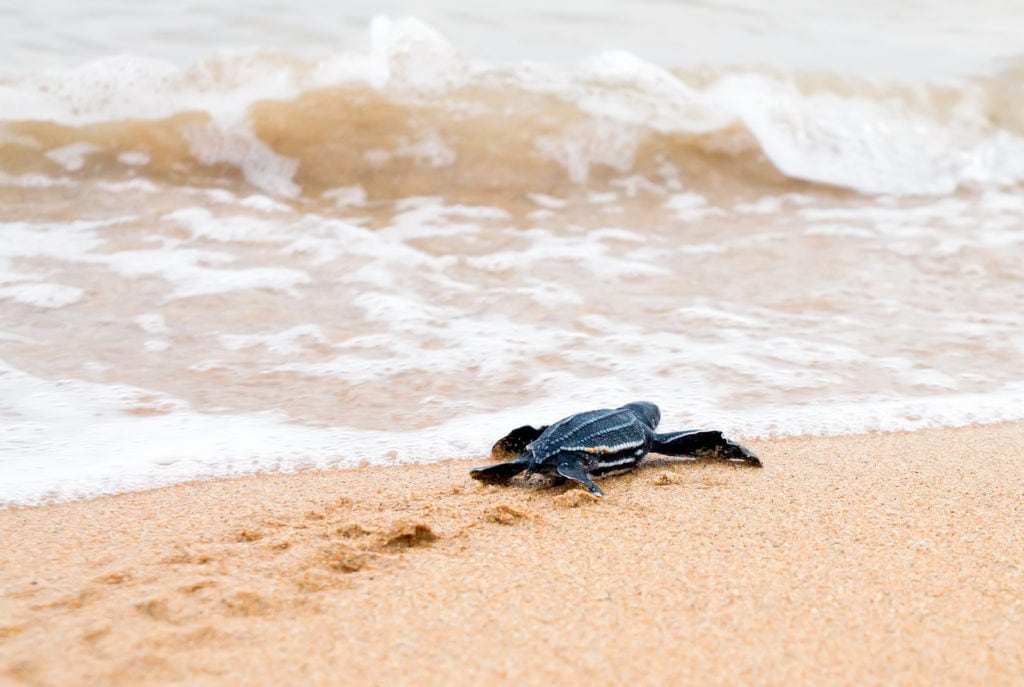
Although some sea turtles can lay hundreds of eggs each breeding season, only a small fraction of those turtles will survive to adulthood. Firstly, adult sea turtles are having trouble finding nesting grounds in which to breed and lay their eggs. Due to climate change and human impacts, the beaches that are commonly used as turtle nesting sites are increasingly disappearing.
After the eggs are laid, the young turtles face dangers before they are even hatched. Many creatures will dig up the eggs for food, including humans. It’s not legal for humans to do this in most countries, but it still happens. Even where humans aren’t a problem, the eggs may be poached by creatures like raccoons.
After the eggs hatch, the infant turtles must make the perilous journey to the water. This is the most dangerous time for these babies because they are completely exposed and vulnerable, unable to move very fast. If they can not reach the ocean fast enough, they will easily be picked off by hungry creatures such as sea birds.
Baby sea turtles know instinctively to head to the ocean as soon as they’ve hatched, but man-made disturbances often disrupt this instinct. If a beach is noisy, or has street lights overlooking the beach, that can prove fatal to the newborn turtles. The noise and light pollution is very confusing to them, and it can cause them to not know where the ocean is located.
Even if the infant turtles make it off the beach and into the water, the danger has not been averted. The water can be almost as dangerous as the beach because the baby turtles are incredibly tiny. They make easy prey for many hungry animals. Therefore, only a small fraction of sea turtles will ever make it to adulthood. This means that there are less sea turtles to breed.
Pollution
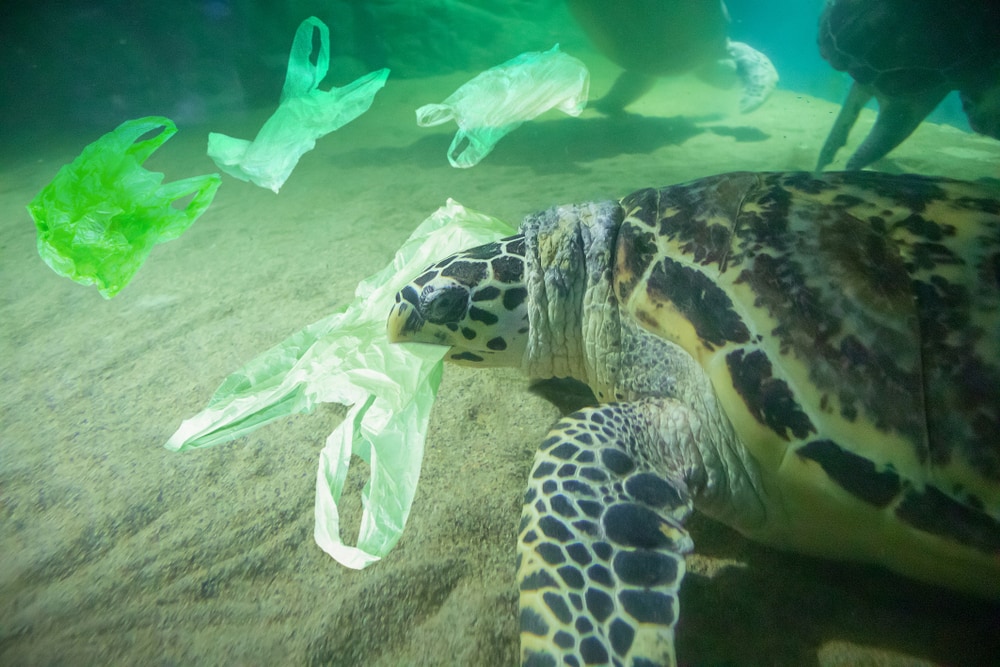
In addition, pollution has had a terrible effect on sea turtle populations, particularly pollution of trash. Many sea turtles feast on jellyfish as one of the main sources of their meals. Unfortunately, many pieces of trash, such as plastic bags, resemble jellyfish. The sea turtles will feed on these bags and eventually die, either from choking or from a digestive blockage.
However, oil is another awful pollutant that plagues our oceans. OIl spills are most dangerous to ocean life when they occur because of large companies spilling their oil. However, the ocean also receives a large amount of oil from cars that run from the land, into the waterway, and into the ocean.
Besides the oil leakage directly impacting the turtles, it is also having an indirect impact. Oil pollution is very likely to have detrimental effects on a turtle’s food source, like fish and crabs who are more sensitive to pollution. Not only that, but the habitats in which sea turtles search for food may be destroyed or altered by pollution.
You may also like: What Is Poaching And Why Is It Practiced?
A Sea Turtle’s Life Cycle

Sea turtles will mate in the ocean, with the male never coming ashore. The female will come ashore when she is ready to lay her eggs. She will create a nest, usually in the sand, where she will deposit the eggs. She does not stay with the eggs, but will head directly back out into the ocean.
Eggs
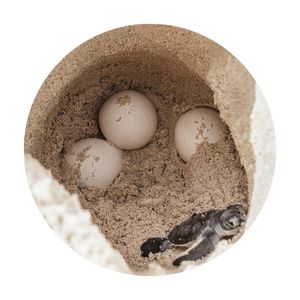
If the eggs are not poached by predators, then the babies will emerge from their eggs about 6-8 weeks later. They will head directly toward the water where they’ll be safer. However, as I mentioned earlier, many of these infant turtles will not make it to the ocean. The ones that do are just as likely to be eaten by a larger creature in the ocean.
A single mother turtle may lay over 100 eggs in a single batch, but not many of those babies will survive to adulthood. It is estimated that only 1 in 1,000 to 1 in 10,000 sea turtles make it to adulthood, which is considered to be about 10 years of age.
The Juvenile Years

Researchers refer to the ages of 2-10 years as the “lost years” because sea turtles are so hard to track during this time. The way that researchers track turtles is by attaching a monitor to the back of their shell. However, these monitors are very large and bulky. Usually, researchers don’t have monitors that are small enough to fit on the shells of smaller turtles.
Even so, in 2014, a group of researchers were determined to track sea turtles during their last years. They raised a group of sea turtles from birth to several months of age. They designed a set of transmitters specifically for the young turtles so that they could track them.
What the researchers found is that these young turtles head further out to sea to avoid predators. However, they will stick to the surface waters where it is warmer because the warm temperatures help them to grow.
Adulthood
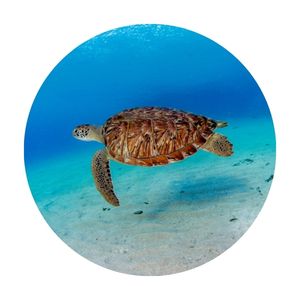
If a sea turtle makes it to adulthood, it becomes much more likely that the turtle will live a long life. However, there are some ocean creatures that will prey on sea turtles, including some species of sharks.
Although sea turtles are considered adults at about 10 years of age based on their size, they will not reach sexual maturity for at least another decade. Most sea turtles will become sexually mature at 20-30 years of age.
At this point, they will stick mostly to coastal waters where they will search for food. The only time that they come close to the shore is to mate. The females are the only ones that will physically climb onto the beach to lay her eggs.
Most often, a female sea turtle will return to her own birthplace to lay her eggs. They remember the beach where they’ve given birth due to the magnetic pull of the earth. Because sea turtles travel for long distances, many of them will have to migrate for thousands of miles to reach their birthplace.
Most sea turtles are only reproductive for about 10 years after they’ve reached sexual maturity. However, there are reports of female sea turtles laying eggs up until the age of 80.
How Long Do Sea Turtles Live?
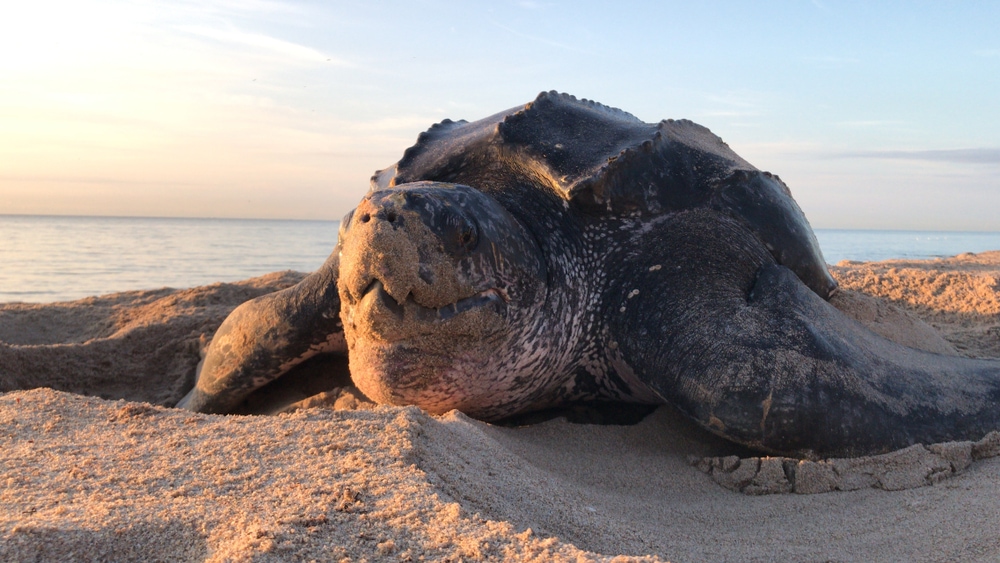
It is difficult to know the exact lifespan of sea turtles, and researchers are still unsure about exactly how long these creatures can live. This is because sea turtles are quite difficult to track, and they often outlive their researchers, or the duration of the study.
For example, the satellite data linked to a tagged turtle will usually only continue transmitting data for 6-24 months. This is not nearly enough time to determine the average age of a sea turtle.
Humans & Sea Turtles
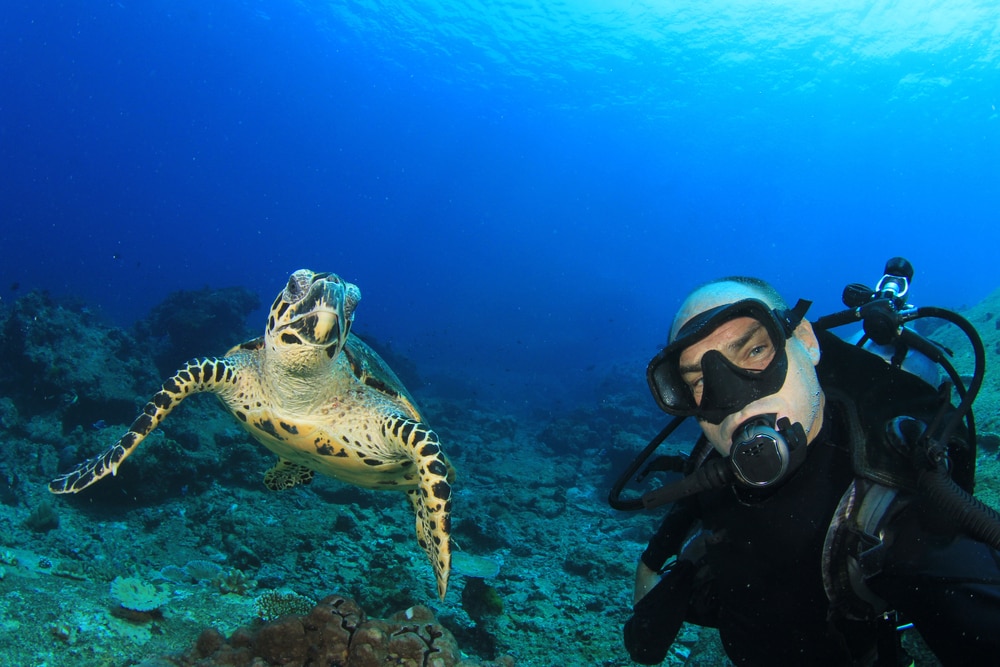
However, we do know that sea turtles live for a long time and have a similar life cycle to that of humans.
For example, humans age slowly and do not reach maturity for about two decades. Similarly, sea turtles will generally not reach maturity for 20-30 years. In comparison, their sexually productive years are quite short. Sea turtles will generally only stay sexually reproductive for about 10 years after reaching maturity.
If they can make it to adulthood, sea turtles can live long lives. Some species of sea turtles are able to live for more than 50 years.
DNA Aging
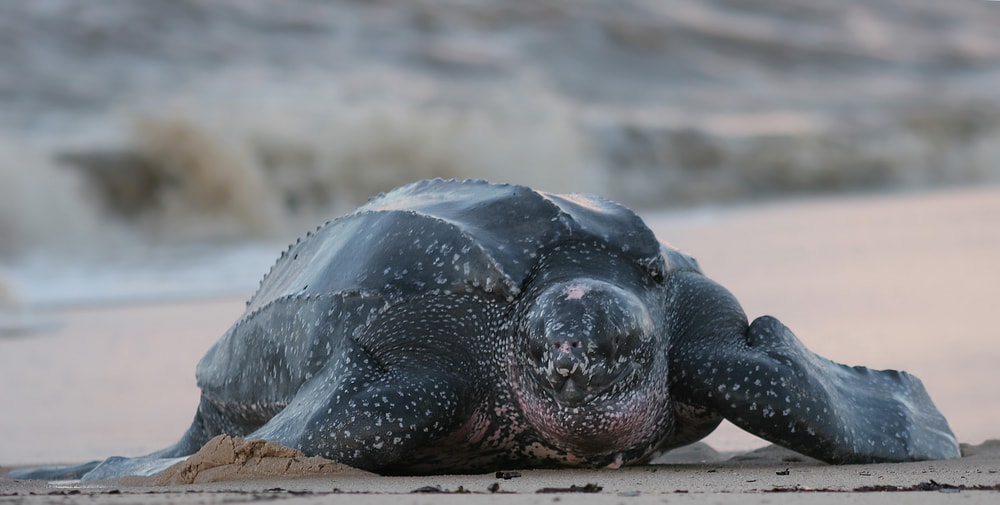
Determining the age of sea turtles is becoming more accurate because researchers have discovered a way to estimate a turtle’s age based on their DNA. The study that was performed was successfully able to determine the average lifespan of five out of the seven species of sea turtles.
Generally, the results show that the larger the sea turtle, the longer it is likely to live. This is backed up by the fact that the leatherback sea turtle is the longest lived species of sea turtle in the world. They are also the largest turtle in the world, both on land and in the water.
However, there is no scientifically proven way to determine a sea turtle’s age based on their appearance. Researchers will often use a turtle’s size or bone structure to estimate an age, but there is not enough evidence to suggest that these methods are accurate.
Here are the average lifespans expected for five sea turtle species:
- Leatherback Sea Turtle: 90.4 years
- Loggerhead Sea Turtle: 62.8 years
- Olive Ridley Sea Turtle: 54.3 years
- Hawksbill Sea Turtle: 53.2 years
- Flatback Sea Turtle: 50.4 years
However, these average lifespans are not entirely accurate. It is very difficult to accurately estimate a lifespan for a sea turtle because the creatures are so varied even within their own species.
Different species can be found all over the world, and their populations vary, making the environment a major contributor to their lifespan. Because of this, it’s not possible for researchers to estimate a sea turtle’s individual lifespan based on their genetics. We can only make an estimate of the specie’s average lifespan.
According to this study, it doesn’t seem likely that sea turtles will live for more than 100 years. However, there are some researchers — such as Carol Haley, the Assistant Curator of Fishes at the Tennessee Aquarium — that believe some sea turtle species can live for up to 150 years.
Sea Turtles Who Have “Beaten The Odds” — Or So We Think
For reference, there is a green sea turtle named Myrtle who is a resident of the Cape Cod Aquarium. Now, the operators of the aquarium are not sure exactly how old she is, but they estimate her age to be about 90 years old. She has been with the aquarium for over 45 years.
There are other researchers that believe sea turtles can live far longer even than that. In 2006, a shell test was performed on a sea turtle at the Guangzhou’s Aquarium in China. Although researchers are not entirely convinced on the accuracy of these shell tests, the results of the test suggest that the turtle could be over 400 years old.
In short, there is no precise way of determining the age of a sea turtle, and we don’t really know how long they can live. What we do know is that they can live a long time, likely much longer than we give them credit for.
You may also like: 10 Amazing Types Of Turtles In Michigan (ID Guide And Photos)
How Do Sea Turtles Live So Long?
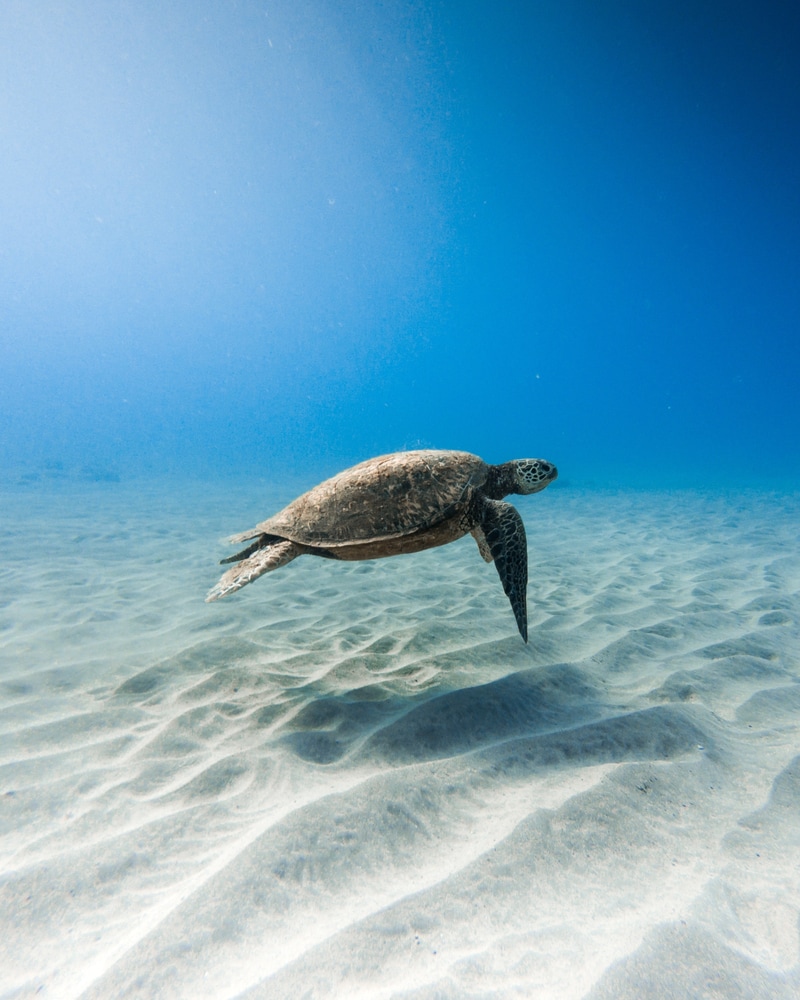
As one of longest-lived animals on the planet, it’s no wonder that humans are curious about the sea turtle’s lifespan. What is it about sea turtles that allows them to likely live much longer lives than we do?
They Have Been Around For Millions Of Years
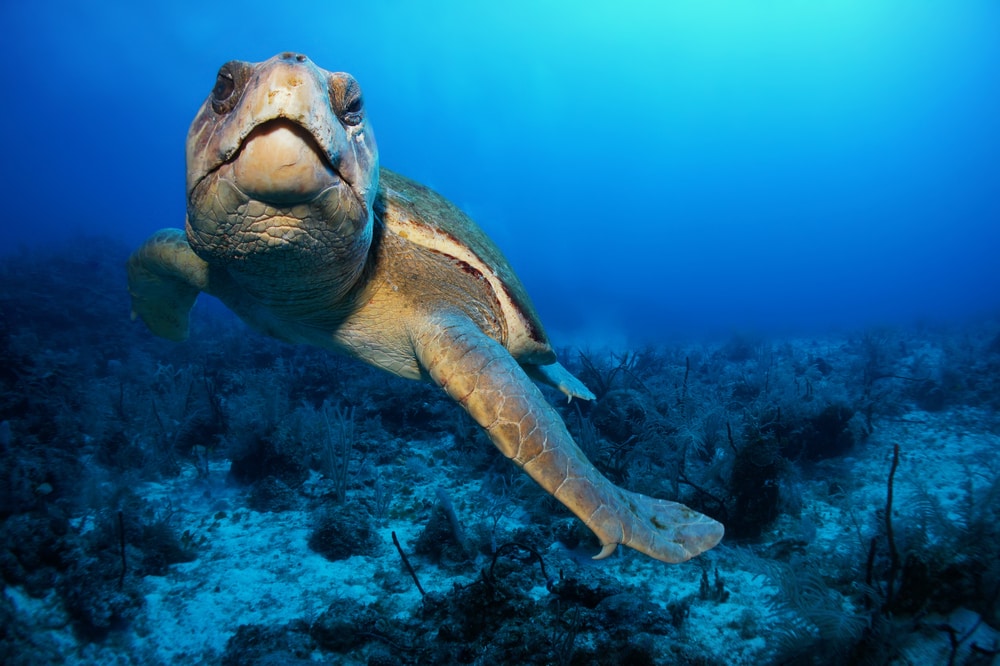
Well, to answer that, we have to consider how long sea turtles have been around. Sea turtles have been roaming the earth for at least 100 million years. In case you don’t know much about the history of the earth, let me put that into perspective for you.
Sea turtles have been alive for about 100 million years. Meanwhile, dinosaurs became extinct 65 years ago. On top of that, we as humans have only been on the earth for about 6 million years.
Sea turtles have been on the planet far longer than we have. They’ve been on the planet far longer than most of the animals alive today. Because of this, they have had ample time to evolve and adapt to the changing world.
Their Slow Metabolism
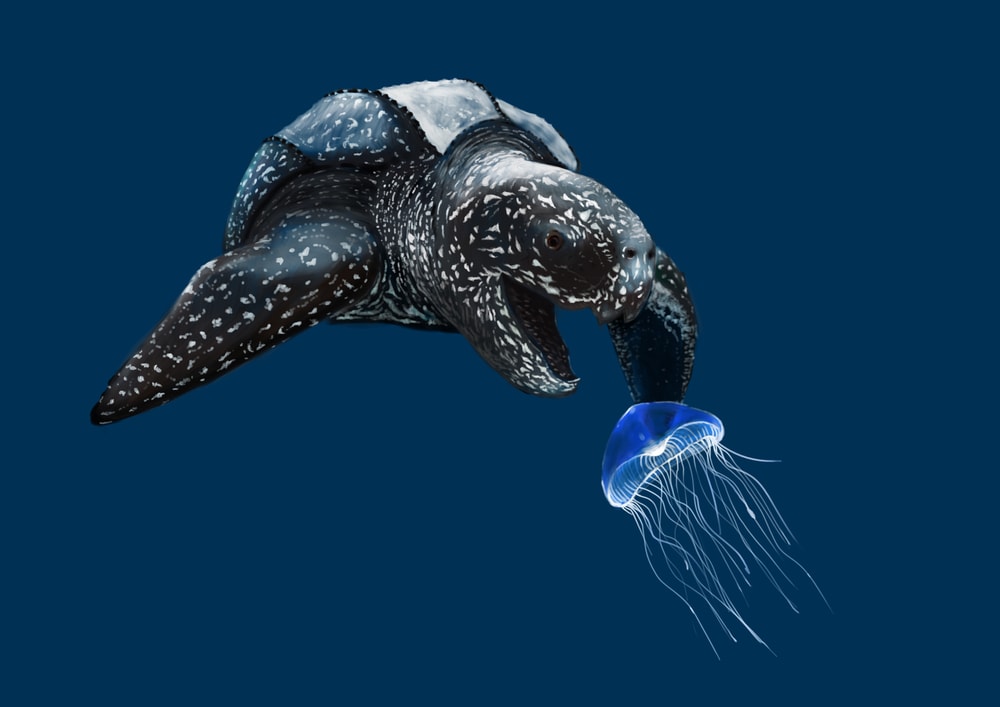
Researchers believe that the main reason sea turtles are able to live so long is because of their slow metabolic rate. The metabolic rate is the key to a sea turtle’s health because it controls their fitness and the size of the population.
Researchers believe that animals with a slower metabolic rate will live a longer life. Because sea turtles have an incredibly slow metabolic rate, they produce energy slower and are able to live much longer.
To help put this into perspective, let’s compare a sea turtle to a hummingbird.
Sea turtles can thrive on low energy to a point that they can slow their heart rate down to 9 beats per minute. They do this because it allows them to dive for up to 5 hours without needing to take a breath.
On the other hand, a hummingbird’s heart beats at a rate of about 1,260 beats per minute, and they need to eat every 10 minutes. Their bodies simply move much faster from the inside out, and they need a lot more energy to survive. Because of this, hummingbirds live much shorter lives than sea turtles.
You may also like: 31+ Florida Turtles: ID Guide With Facts, Chart And Photos
Types Of Sea Turtles
1. Green Turtle (Chelonia mydas)
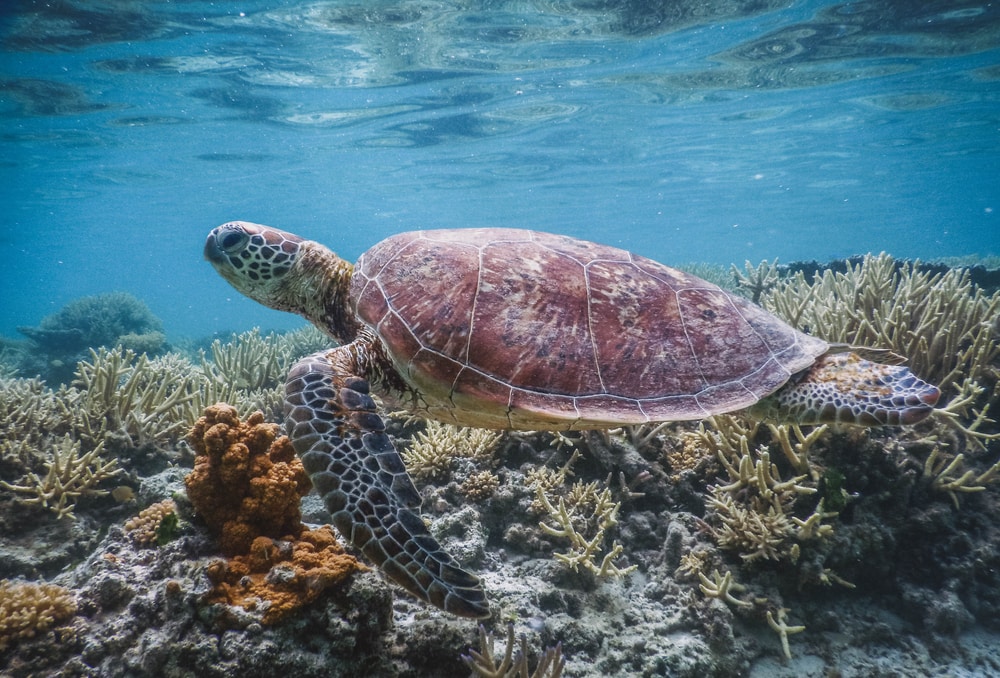
Green sea turtles are named because their subdermal fat is green. They are different from other sea turtle species because they have only one pair of prefrontal scales, while other sea turtle species have multiple pairs. Their snouts are short, and their beaks are very strong for tearing.
They will lay eggs about once every 2-4 years when they return to the beach where they were born. They can have 1-9 clutches of eggs every breeding season, although 3 is the average number of clutches produced. The mother may lay between 75-200 eggs in a single clutch.
It is believed that the maximum lifespan of a green sea turtle may be about 75 years.
2. Leatherback Turtle (Dermochelys coriacea)
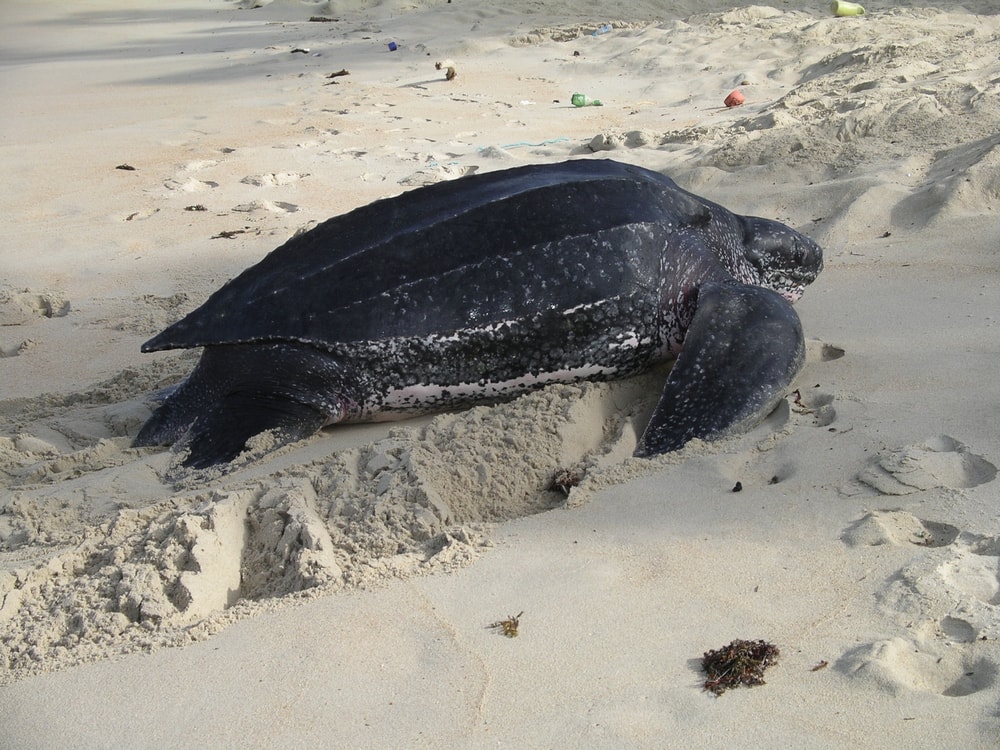
The leatherback sea turtle is the largest turtle on the planet, both in the ocean and on land. They are so large that they can reach a length of 6.9 ft (2.13 m) and an “arm”-span of 8.8 ft (2.7 m).
Unlike most turtles, leatherback turtles do not have a visible shell. They have a shell, but it is different from that of other sea turtles. It is formed from bones that are attached to their skin. The skin is dark brown or black, and there will be seven ridges on the top of their back, as well as five ridges on their underside.
Female leatherback sea turtles will breed about once every 2-3 years. When a mother leatherback sea turtle is ready to lay her eggs, she will come ashore and create her nest. They will typically produce 50-170 eggs in each clutch, and they may produce 5-7 clutches a year.
According to the study discussed above, leatherback sea turtles may have a lifespan of up to 90 years.
3. Flatback Turtle (Natator depressus)
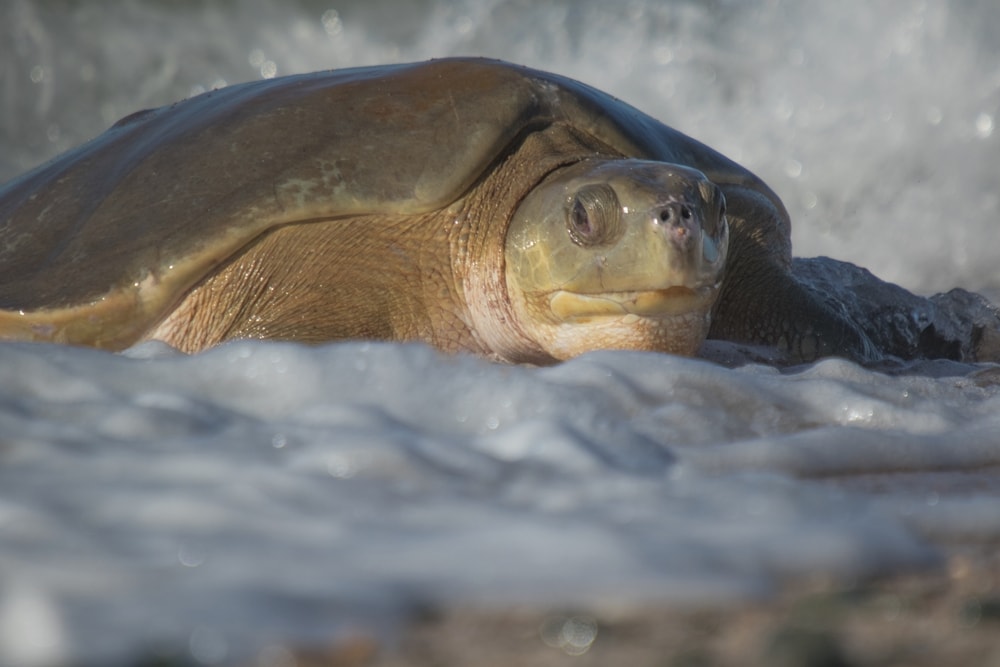
Flatback sea turtles are medium-sized turtles with an average weight of 154.3 lbs (70 kg). The females will typically be larger than the males, but the males will have longer tails than the females. Their heads are rounded and match the olive color of their carapace. They are named flatback turtles because the carapace is much skinnier than that of other sea turtles.
When a flatback turtle is ready to lay eggs, the mother will create a nest where she deposits about 50 eggs.
According to the study mentioned above, flatback sea turtles may have a lifespan of about 50 years.
4. Loggerhead Turtle (Caretta caretta)
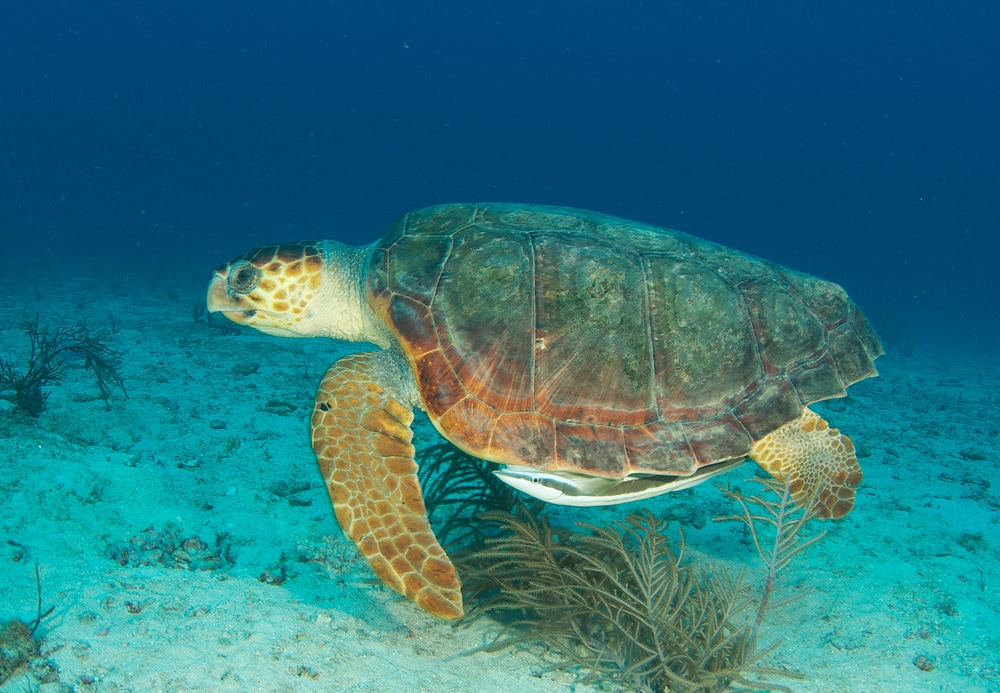
Loggerhead sea turtles are named because they have very large heads and extremely powerful jaws. They are the largest hard-shelled turtle in the world, coming second in size only to the leatherback turtle which is soft-shelled.
Their carapace is a pretty reddish-brown coloration with hints of olive. They have five pairs of pleural scutes. Their underside is yellow, and their skin is usually reddish-brown to pale yellow.
A female loggerhead turtle will only breed once every 2-4 years, although sometimes they may wait up to 9 years before breeding again.They will lay between 2-5 clutches over the breeding season. In each clutch, she may lay between 110-130 eggs.
According to the above study, loggerhead sea turtles are thought to live up to 63 years in the wild.
5. Hawksbill Turtle (Eretmochelys imbricata)
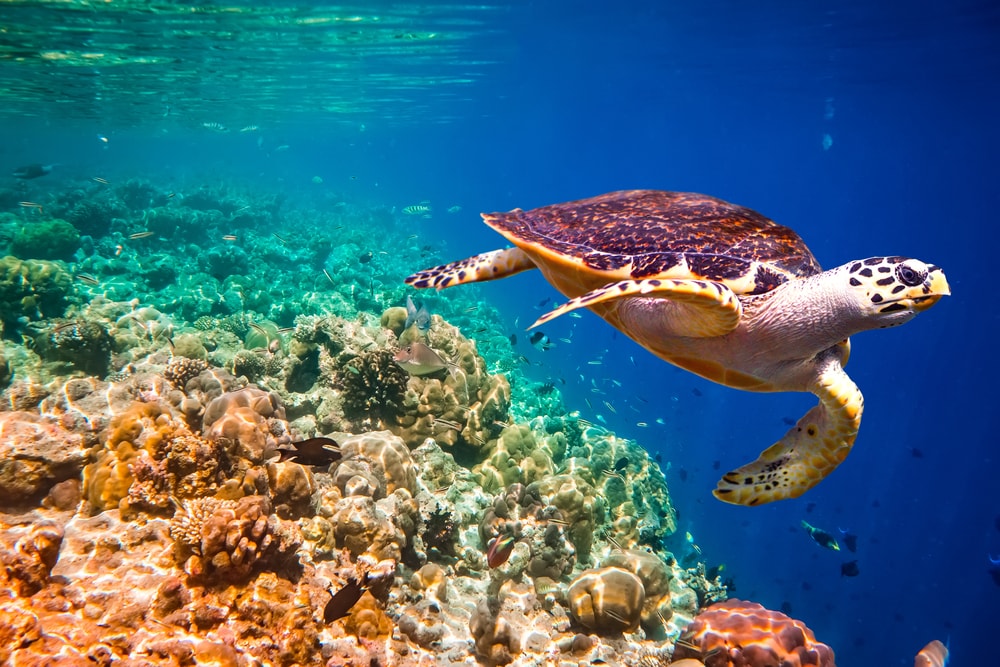
Hawksbill turtles are known for their heart-shaped carapace that they sport during their juvenile years. As they age, their carapace begins to elongate, losing that heart shape. Their heads are very sharp and pointed, giving them the appearance of a bird beak. These sea turtles are relatively small with an average length of just 2.8 ft (0.87 m).
There are five things that make a hawksbill turtle stand apart from the six other sea turtles:
A female hawksbill turtle will breed only once every 2-3 years and she may have about 3 clutches over the breeding season. The typical hawksbill turtle will lay about 140 eggs in each clutch.
According to the above study, researchers believe that hawksbill turtles may live up to 53 years.
6. Kemp’s Ridley Turtle (Lepidochelys kempii)
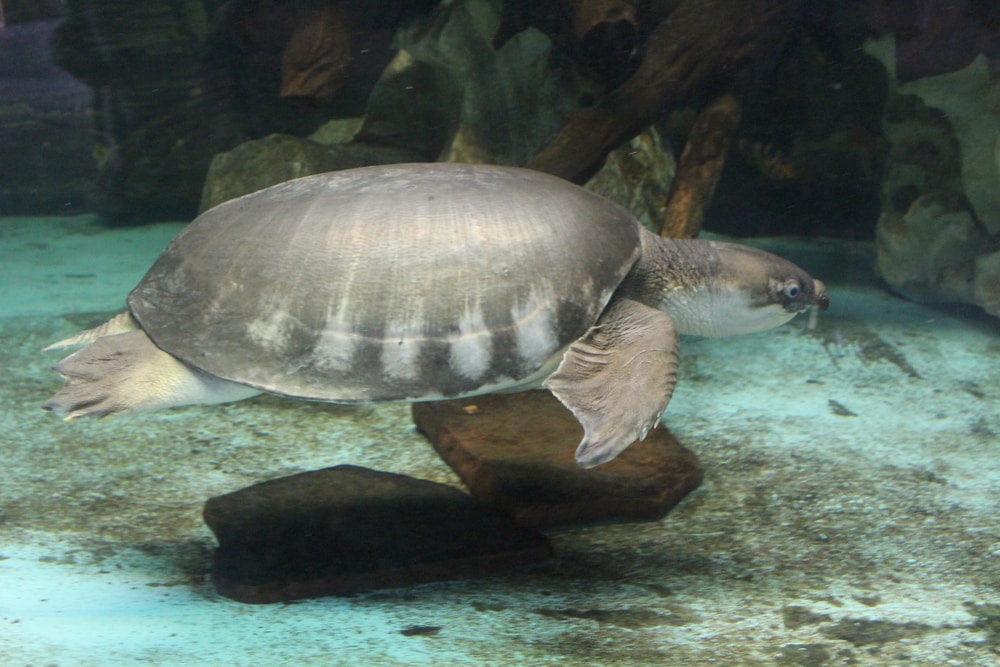
Kemp’s Ridley sea turtles are the smallest species of sea turtle in the world, reaching only 1.8-2.4 ft (0.55-0.75 m) in length. Their carapace is a grayish-green coloration, while the underside is off-white or light yellow in coloration.
Kemp’s Ridleys will only breed once every 2-3 years, but they will lay multiple clutches throughout a single breeding season. Typically, they will produce between 50-200 eggs per clutch.
Researchers believe that Kemp’s Ridley sea turtles may live up to 50 years.
7. Olive Ridley Turtle (Lepidochelys olivacea)
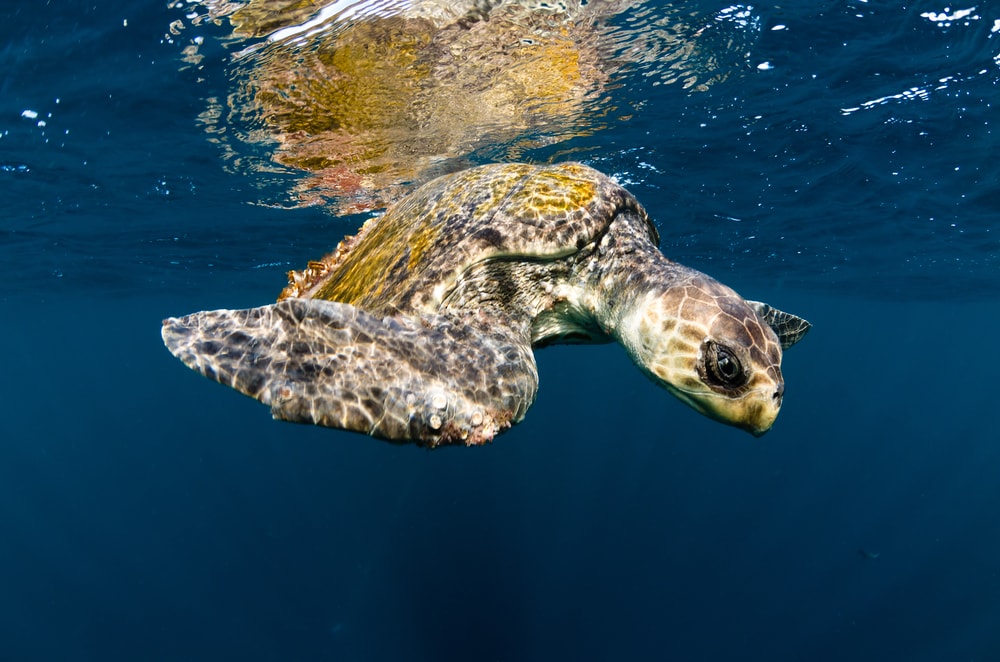
Like the Kemp’s Ridley, the Olive Ridley sea turtle is also quite small. They will only reach a length of about 2.4 ft (0.75 m), and will only weigh about 100 lbs (45 kg). Their skin is an olive-gray color, and their carapace is olive in color. You can tell male and female apart because the male’s tail will extend past the carapace, while the female’s will not.
A female olive ridley turtle may lay between 100-150 eggs per clutch. According to the above research, it’s believed that olive ridley sea turtles may live up to 54 years.








